Are you familiar with the monoliths at Waun Mawn? Maybe not, but a team of researchers believes that the dismantled stone circle in the Preseli Hills of west Wales is extremely significant. They have linked it to the Stonehenge story.
Just four stones remain to tell the tale of Waun Mawn, but an archaeologist has been singing the praises of this inconspicuous site%20
Is this the Proto-Stonehenge?
The oldest story of Stonehenge’s origins appears in Geoffrey of Monmouth’s ‘History of the Kings of Britain’ (c. 1136 AD). It claims that the Stonehenge stones originally belonged to a stone circle in Ireland called the Giants’ Dance. In the legend, Merlin had the stones shipped by a force of 15,000 men who had defeated the Irish. The stones were believed to have magical and healing properties and they were used to build Stonehenge in honor of the Britons who were killed by Saxons during peace talks at Amesbury.
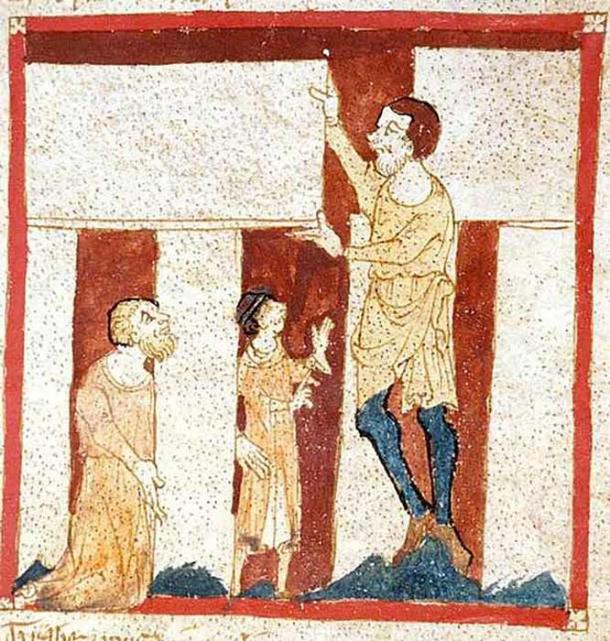
Merlin erecting Stonehenge out of the stones from the Giants’ Dance. (from a 14th-century French romance, British Library Egerton MS 3028, fo. 140v). ( Public Domain )
This story is just fantasy, but the new paper suggests that there is a small grain of truth hidden within it –%20
The ‘Stones of Stonehenge’ project led by%20

3D photogrammetric image of stonehole 91 after excavation of the socket left by the standing stone ’s removal, viewed from the north. The imprint of this stone (in the right half of the stonehole) reveals that the base of this stone had a pentagonal cross-section. The ramp, along which the stone was erected and removed, is at the top of the picture (photograph by A. Stanford/ %20
But their geophysical study of the site near the%20
To date, they write that their excavations have identified six holes for missing standing stones at Waun Mawn. Moreover, they believe that “The six stoneholes and four surviving standing stones (ten in total) may have originally formed part of a circle of 30–50 stones.” Lead author of the current study, Professor Parker Pearson%20
“In September 2018, we excavated five main trenches at the partial stone circle at Waun Mawn. These included the stone holes of two of the recumbent monoliths and revealed 12 further features extending beyond the ends of the arc. Six of these features were holes for standing stones removed in antiquity. Together with the four remaining monoliths, they were part of a former stone circle.”
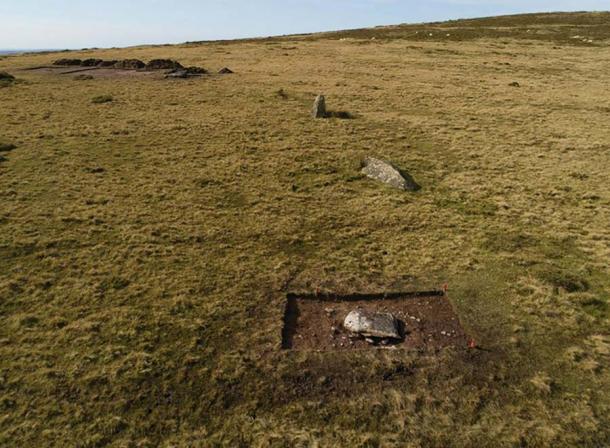
The arc of former standing stones at Waun Mawn during trial excavations in 2017, viewed from the east. Only one of them (third from the camera) is still standing. Recumbent stone 13 is in the foreground (photograph by A. Stanford/ %20
By using optically-stimulated luminescence (OSL) dating, Waun Mawn has been dated to sometime between 3600-3200 BC. Radiocarbon dating of charcoal and sediments in the stoneholes suggests that the stone circle was erected around 3400 BC and there was an absence of activity at the site between 3000-2000 BC. Study co-author Tim Kinnaird of the University of St Andrews says:
“it is the hidden information preserved in the soils that provides the chronology for the construction, then the dismantlement of the Waun Mawn stone circle, intriguingly just before similar stones were erected at Stonehenge.”

A plan of the currently excavated sections of Waun Mawn and Stonehenge 1. (Credit: K. Welham & I. de Luis/ %20
Comparing the Stonehenge and Waun Mawn Characteristics
It would have been no small feat to dismantle a stone circle, move its stones 280 km (175 miles), and then%20
<iframe width=”560″ height=”315″ src=”%20
For one thing, the first stage of Stonehenge was built in 3000 BC, which fits well with the timeframe when the Waun Mawn monoliths were believed to have been extracted. Waun Mawn’s location is also near the quarries which have previously been identified by the same researchers as the source of the Stonehenge bluestones. They also explain in the paper that the unusual cross-section of one of the Stonehenge bluestones matches one of the holes left at Waun Mawn and “the dimensions of the Waun Mawn stones compare well with those of the three unspotted dolerite pillars at Stonehenge.”
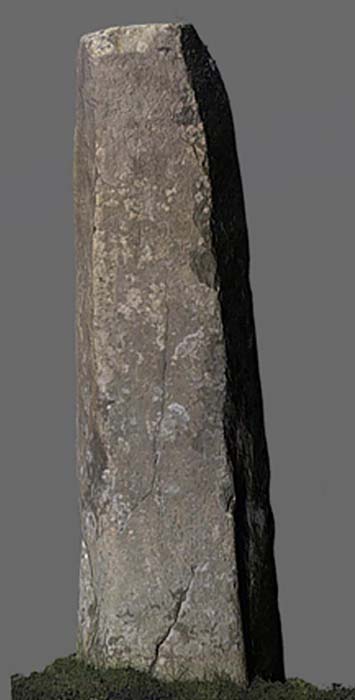
A bluestone (Stone 62) at Stonehenge. Its geology and lower cross-section match the chippings and imprint of one of the stoneholes at Waun Mawn. (Credit: A. Stanford/ %20
Although the stone arrangement at Waun Mawn appears to have been more irregular than what is seen at Stonehenge, the researchers note that, like Stonehenge, it was aligned on the midsummer solstice sunrise. Two of the standing stones at Waun Mawn were positioned as an entrance facing that direction. Waun Mawn’s stone circle also had a diameter of 110m (360.89 ft.), which is the same as the ditch enclosing Stonehenge.
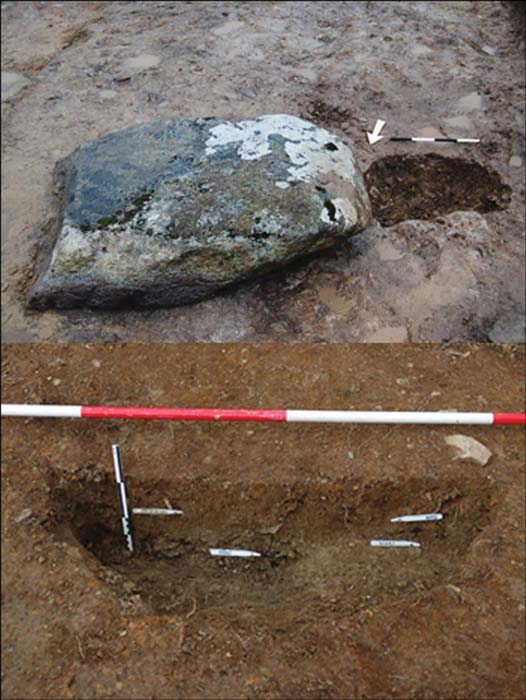
Top) recumbent stone 013 lying beside its stonehole (9), viewed from the west. It formed the west side of the stone circle ’s north-east-facing entrance. Although the top of this pillar (left) is broken off, its weathered surface indicates that this probably occurred long before the Neolithic; bottom) stonehole 21 in half-section, viewed from the east. With its ‘gunsight’ arrangement, perpendicular to the circumference of the stone circle, the removed pillar would once have formed the east side of the north-east-facing entrance (photographs by M. Parker Pearson/ %20
The researchers%20
“With an estimated 80 bluestones put up on Salisbury Plain at Stonehenge and nearby Bluestonehenge, my guess is that Waun Mawn was not the only stone circle that contributed to Stonehenge. Maybe there are more in Preseli waiting to be found. Who knows? Someone will be lucky enough to find them.”

Left) a flake of unspotted dolerite from stonehole 91 was recovered from the junction of the empty socket and the ramp; top right) stone 62 is one of the three unspotted dolerite pillars at Stonehenge; bottom right) stone 62 ’s basal cross-section matches the imprint of the pillar that once stood in stonehole 91 at Waun Mawn (photographs by S. Laidler & A. Stanford/ %20
Builders of the Third Biggest Stone Circle in Britain
The Waun Mawn stone circle also provides more evidence that%20
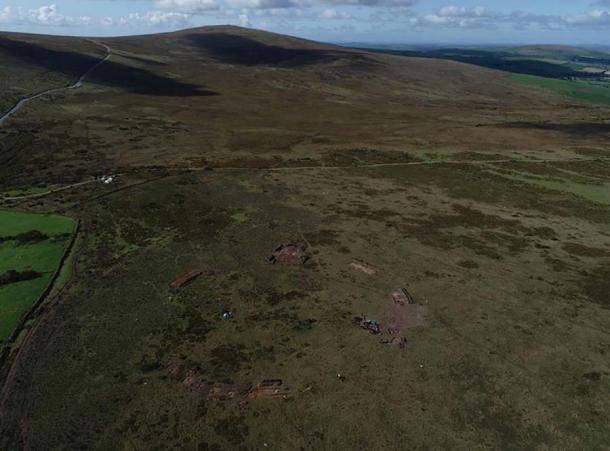
Excavation of the stone holes at Waun Mawn, revealing the scale of the monument. (Credit: A. Stanford/ %20
The Antiquity press release also states that “The find goes a long way to solving the mystery of why the Stonehenge bluestones were brought from so far away, when all other stone circles were erected within a short distance of their quarries.” Parker Pearson wonders%20
The paper revealing the years of research at Waun Mawn, titled ‘The original Stonehenge? A dismantled stone circle in the Preseli Hills of west Wales,’ is now published in the journal%20
The decade of research behind the Waun Mawn discovery and its connection to the Stonehenge stones is also the focus of a new BBC documentary. Stonehenge: The Lost Circle Revealed , will be%20
Top Image: Researchers believe some of the Stonehenge bluestones were sourced from a Welsh stone circle. Source: Roland /Adobe Stock
By Alicia McDermott
 RSS Feed
RSS Feed















 February 12th, 2021
February 12th, 2021  Awake Goy
Awake Goy  Posted in
Posted in  Tags:
Tags: 













